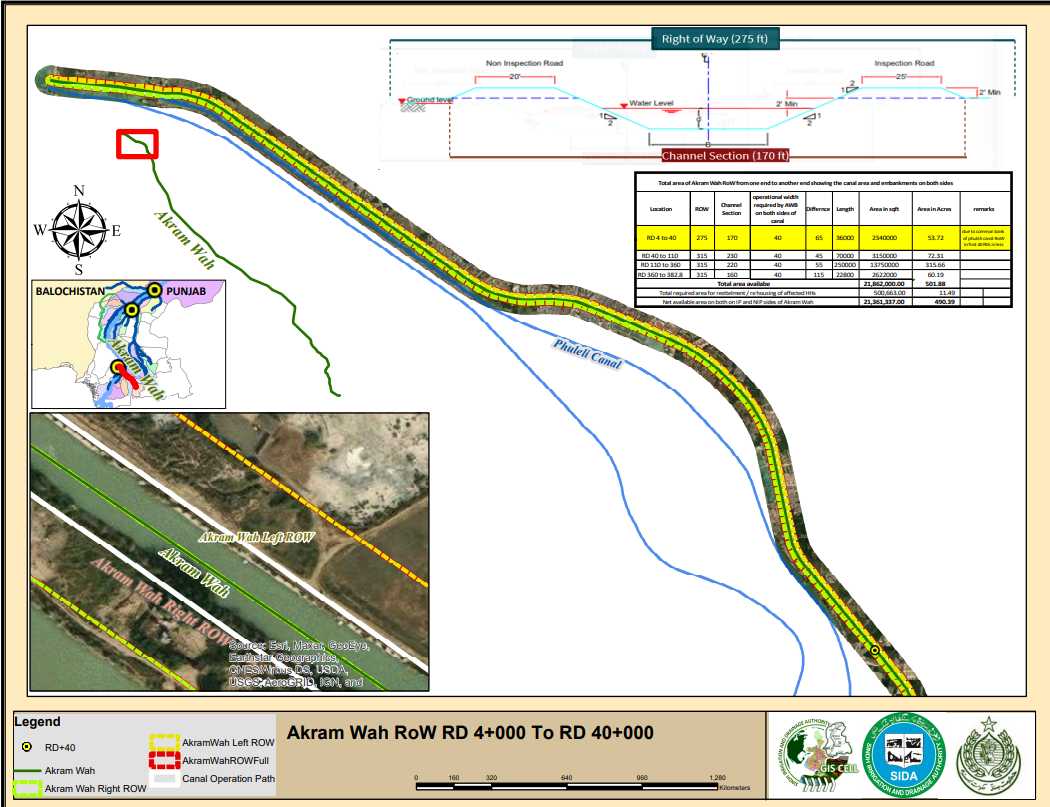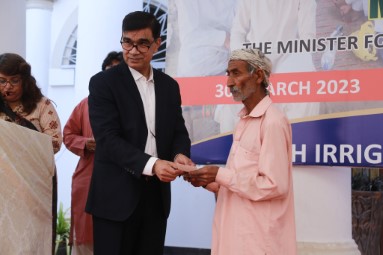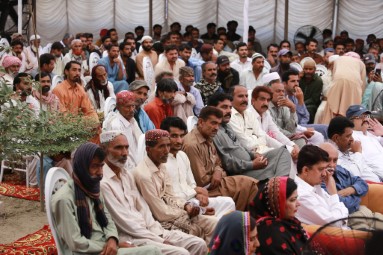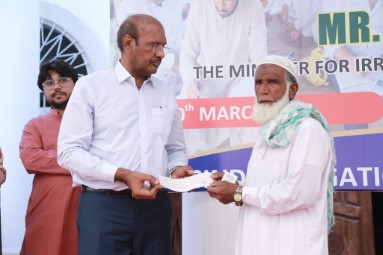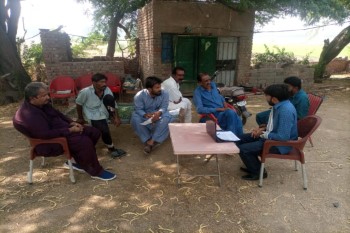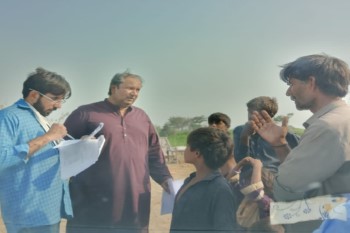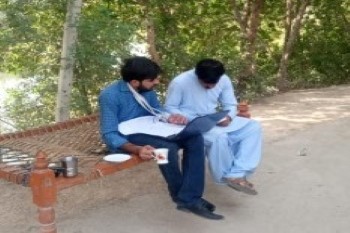Context
The SRMP addresses legacy impacts resulting from the Akram Wah canal's ROW clearance, including pre-project displacement of 1,246 households, necessitating corrective measures and mitigation actions as per Bank requirements.
Prime Objectives
The SRMP within the SWAT Project targets legacy issues from AED displacements, offers mitigation for affected households, anticipates future displacements, and establishes comprehensive implementation frameworks and systems.
SRMP MIS
A comprehensive Management Information System with a real-time dashboard tracks and monitors all SRMP activities, ensuring transparent oversight and timely decision-making for effective project management.
About
Overall Goal
"Safeguarding Legacies, Empowering Lives: Navigating Impactful Change with the Akram Wah Subproject SRMP."
The Social and Resettlement Management Plan (SRMP) tailored for the Akram Wah Subproject stands as a comprehensive blueprint meticulously addressing legacy concerns and land-take impacts.
Firstly, it delves into the aftermath of the anti-encroachment drive, a pivotal facet of the Government of Sindh's initiative to reclaim public lands, highlighting the legacy issues that ensued.
Secondly, it outlines the Sindh Irrigation and Drainage Authority's strategy to alleviate adverse impacts on project-affected persons (PAPs). This encompasses not only mitigating measures but also initiatives to uplift their living standards, coupled with robust monitoring and evaluation frameworks.
Thirdly, the SRMP lays out a proactive approach by SIDA to preempt, minimize, and manage potential future land acquisitions and displacements associated with the project. In essence, this management plan aims to rectify legacy issues by providing compensation for asset loss, facilitating housing upgrades, and introducing social protection measures, ultimately fostering improved livelihoods for those impacted by the Akram Wah Subproject.
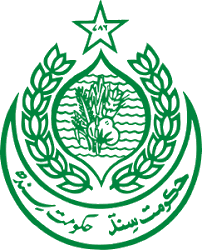
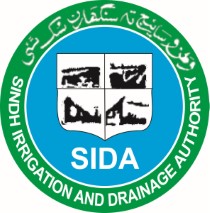


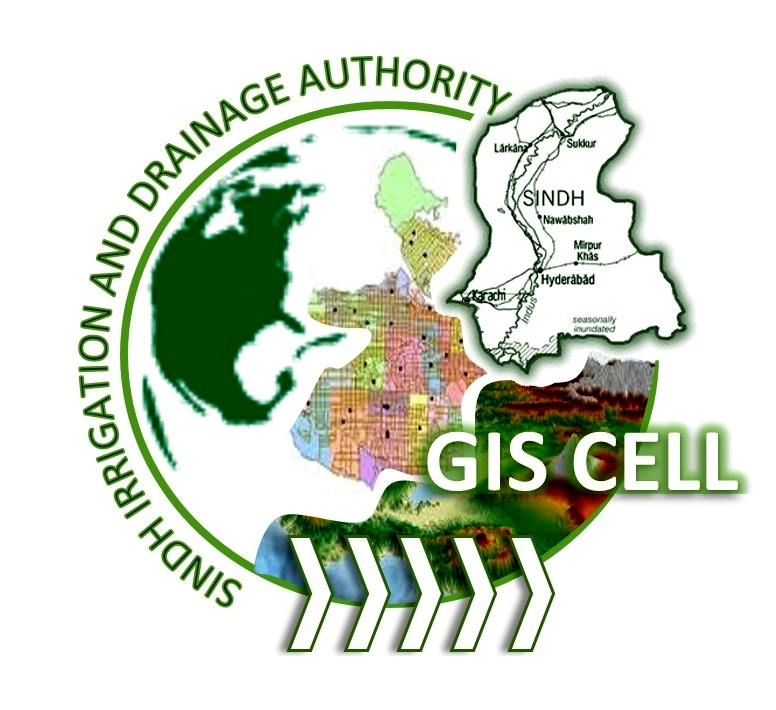
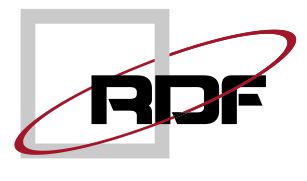
General Information
No. Of PAPs
House Upgradation
COMPENSATION PAID
GRC Response
No of Trainings
ADP Scheme Details
Background
The proposed rehabilitation of Akram Wah Canal is a subproject under C2 and is at advance stage of technical design. Akram Wah is very critical in achieving the overall SWAT Project objectives as it will restore the irrigation flows (3,714 cusecs) of the canal by rehabilitating the existing embankment and concrete lining and replacing hydraulic structures. The total length of Akram Wah Canal is 116 km or 382 RDs1 . The proposed rehabilitation works include:
- Removal and disposal of existing damaged canal lining (59 km; RD 0 to RD 194)
- Construction of retaining wall through Hyderabad city (11 km; RD 0 to RD 36)
- Re-profiling of the earthen canal (48 km; RD 36 to RD 194)
- Embankment raising and strengthening (58 km; RD 194 to the tail end)
- Reinstatement of the Inspection Path (IP) and the Non-Inspection Path (NIP) for canal maintenance
- Replacement of 4 cross regulators, 13 head regulators and 1 escape structure
- Replacement of 8 syphons, existing sanctioned pump houses, bridges, protection work to abutments, piers and deck slabs of existing pre-stressed concrete bridges
- Furnishing of Inspection bungalow and office at Badin, and construction of Engineer's office and staff quarters at Tando Muhammad Khan
As part of a previous operation with the Bank, SIDA prepared a preliminary Resettlement Action Plan for Akram Wah Subproject in October 2020, following the World Bank OP4.12 Resettlement Policy. According to the RAP, an estimated 19.47 acres of privately owned land was required for construction and/or replacement of existing hydraulic structures along the canal length. In addition, the RAP reported the presence of 788 informal households/encroachers living on government lands within the COI. These informal settlers/encroachers identified in the RAP would have eventually been required to resettle for project works.2 However, this preliminary RAP was never presented or approved/cleared by the Bank. The rehabilitation of the Akram Wah canal remains critical to the overall objectives of SWAT Project outcomes.
Project Impact
Stakeholders Consultation
The consultations aimed to gather insights into the perceived impacts of the project, share information about project activities, benefits, and mitigation measures, and encourage feedback. Divided into two phases, these meetings included sessions with government officials, community representatives, and women from affected households. The data collected from these consultations significantly contributed to the planning of the SRMP.
A total of 225 meetings engaging 1,842 individuals were conducted, with specific focus on approximately 700 women through 68 group discussions. Feedback revealed concerns regarding housing loss, compensation, livelihood disruption, and uncertainties about resettlement. The SRMP sought to address these concerns by providing compensation for housing losses, support for livelihoods, employment opportunities, and ensuring the needs of vulnerable groups were met.
Moreover, the SRMP details a plan for public disclosure through brochures in Urdu/Sindhi languages, ensuring affected families are informed about their entitlements, compensation rates, payment procedures, and grievance redress mechanisms.
Moving forward, the SRMP emphasizes ongoing consultation during implementation. SIDA and AWB officials will continue engaging with affected communities, involving them in decision-making processes related to resettlement options, livelihood programs, and overall project activities. This sustained engagement aims to ensure the smooth implementation of the SRMP and its alignment with the needs of the affected households and communities.
Measures For CAP, RAP
It discusses CAP legacies, specifically cash compensation for structure losses during the Anti-Encroachment Drive (AED) operations. The compensation varies for different types of structures and efforts to bridge shortfalls for rebuilding/upgrading.
The payment modalities and processes under CAP are outlined in a four-step process, covering allowances, housing programs, and livelihood enhancements for affected individuals. On-site resettlement options and housing upgrades for displaced households are emphasized, along with processes for approval and implementation.
There's a comprehensive strategy for housing upgrades for different household categories, ensuring funds for construction based on compensation received and support provided by SIDA. Specific steps, permissions, and technical support are detailed.
The resettlement framework/RAP for future land acquisition delineates guiding principles, negotiation approaches, and provisions for displaced households, ensuring compliance with national laws and safeguard policies.
The Livelihood Enhancement and Skill Training program aim to improve livelihoods through vocational training, farm-based skills, and employment opportunities, covering different preferences expressed by affected households. A planned approach involves hiring an expert, assessing needs, and developing programs for income restoration and employment.
SRMP Implementation
The responsibility for SRMP implementation and supervision primarily lies with SIDA, the project implementing agency for SWAT. SIDA oversees the project, including the Area Water Board (AWB), which operates under its jurisdiction. The AWB, responsible for canal operations and ROW management, is an integral part of SIDA's structure and implementation strategy.
The implementation tasks are distributed among various bodies, including SIDA, District Administration, Project Consultants, and independent monitors.
The Environment Management Unit (EMU) within SIDA oversees safeguard tasks, supported by AWB engineers and the Project Coordination and Monitoring Unit (PCMU). The Left Bank AWB and its field offices play crucial roles in SRMP implementation, including compensation disbursement and preventing further encroachment.
The Project Coordination and Monitoring Unit (PCMU) manages coordination activities and monitors SRMP progress through regular site visits.
The SRMP involves three main tasks: CAP implementation, Resettlement Action Plan (RAP) for land take, and Livelihood Training Program (LTP). CAP involves a comprehensive plan for affected households' compensation, housing upgrades, and livelihood enhancement. RAP assesses land acquisition impacts and proposes mitigating measures. LTP aims to sustainably support affected households through NGO involvement and skill development.
A Panel of Experts (POE) has been established to periodically review and advise on SRMP implementation. Their recommendations guide improvements and fill potential gaps during the project.
Grievance Redress
Key objectives of the GRM include compliance with OP4.12 requirements, timely resolution of CAP/SRMP grievances, fostering trust between project staff and stakeholders, and promoting transparency through effective communication systems.
A Grievance Redress Committee (GRC) has been formed, headed by a retired judge and comprising SIDA/AWB field staff and representatives of affected communities. The GRC's role is to address disputes regarding compensation, allowances, and asset valuation, aiming to prevent delays in project implementation.
The GRC process involves grievance submission through various channels, followed by a timeline for review and resolution ranging from 5 to 30 days depending on the nature of the grievance. Accessibility to the GRM structure is ensured through designated contact points and multiple channels for submitting complaints.
The EMU within SIDA maintains documentation of grievances, GRC proceedings, and decisions, ensuring transparency and accountability. GRC outcomes are notified to aggrieved parties within stipulated timelines, and any additional awards or compensations mandated by the GRC are to be disbursed within 30 days by the SIDA Office.
All GRC-related documents are maintained by the EMU and made available for review by external monitors, interested parties, and the World Bank. Annual reviews of GRC activities will be published on the project website for stakeholder access.
RAP/CAP
MIS Dashboard Services
Team
Our RAP CAP MIS Team
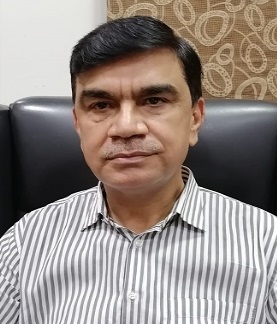
Mr. Pritam Das
Managing Director SIDA
Shahnawaz Bhutto
Director LBC-AWB
Sanwal Karim
Executive Engineer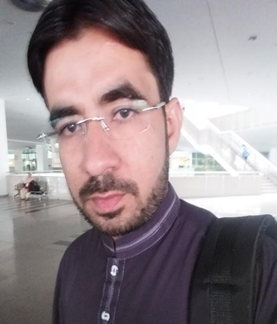
Mr. Muhammad Amin Khushk
Ecologist
Muhammad Ibrahim
GIS Specialist / MIS Manager
Mr. Zaid Sipio
Database Developer / Institutional SpecialistF.A.Q
Frequently Asked Questions
for more information feel free to contact us
-
What functionalities does the SRMP Management Information System (MIS) offer for monitoring project activities?
The SRMP MIS provides real-time tracking, data analysis, and reporting capabilities, facilitating oversight and informed decision-making.
-
What metrics and indicators does the SRMP MIS capture to evaluate the effectiveness of SRMP activities?
The SRMP MIS tracks metrics related to compensation disbursements, housing upgrades, livelihood support, and community satisfaction to assess the SRMP's impact.
-
What is SIDA's primary role in executing the SRMP within the Akram Wah?
SIDA oversees the SRMP implementation, ensuring adherence to its strategies, engaging stakeholders, and managing resources for effective execution.
-
What does the SRMP entail for affected communities in the Akram Wah ?
The SRMP outlines measures to address legacy issues, providing compensation, housing upgrades, and livelihood support for those impacted by the anti-encroachment drive.
-
How does SIDA ensure transparency and accountability in managing SRMP-related activities?
SIDA maintains transparency through regular reporting, stakeholder engagement, and adherence to established guidelines, ensuring accountability in every aspect of the SRMP.
Contact
Contact Us
Monday to Friday - 9 a.m to 5 p.m
Our Address
SIDA Secretariat Left Bank, Barrage Colony, Hyderabad Sindh, Pakistan
Email Us
gmrd@sida.org.pk
Call Us
0333-2609685
